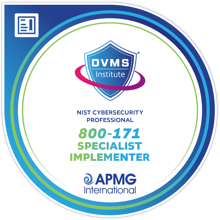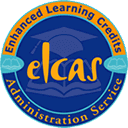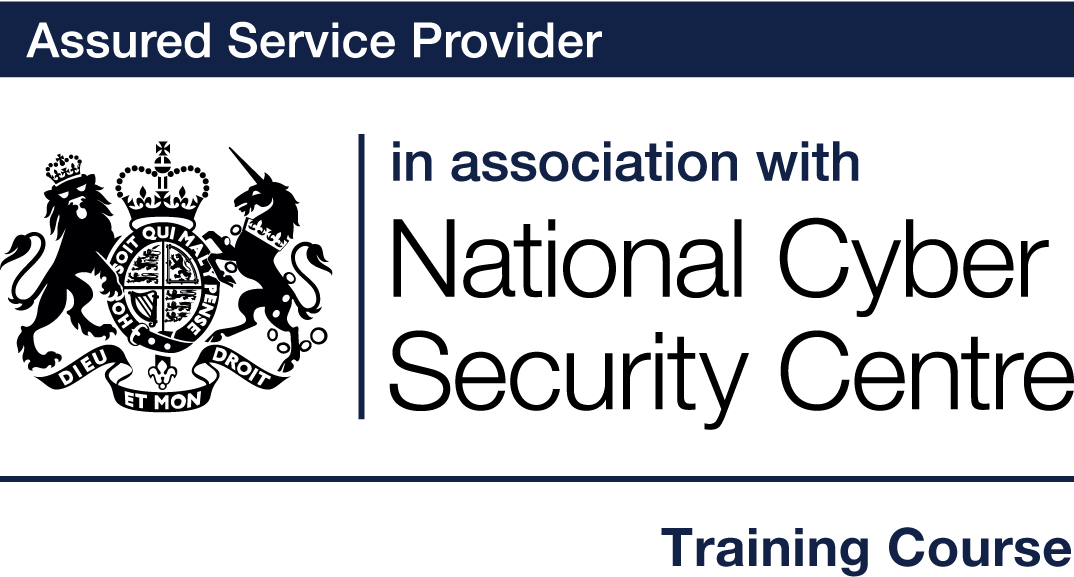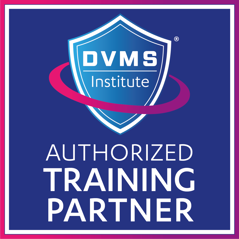NIST Cybersecurity Professional 800-171 Specialist
Book online today or, if you need help choosing the right course or would like to discuss business discounts, call us on 0113 220 7150.
Virtual / Classroom
From £3,670 +VAT
Sorry, there are currently no dates available to book. Submit an enquiry to hear from one of our team about when dates might become available.
Overview
Business goals may include organizing the company to make it more efficient and profitable or redefine the major target markets. Key business goals must also reduce the risk of a data breach, the loss of intellectual property, and the compromise of valuable research data, while protecting employee and customer information. Success requires a business-focused cyber risk management program that includes a complete understanding of business activities and the potential organizational risk when a bad actor compromises one or more of these activities.
Technology goals start with the identified business activities. What technology underpins, enables, supports, or delivers each business activity? To understand security control requirements, we must first identify how the system supports the business activity and the impact of a bad actor on the business. It is essential to consider the risks associated with our systems, applications, and processing environment.
Prerequisites
This course assumes the student has successfully taken and passed the NIST Cyber Security Professional 800-53 Practitioner Certificate course and provides an introduction to the integration of typical enterprise capabilities with cybersecurity from the perspective of the selected cybersecurity informative reference. The overall approach places these activities into systems thinking context by introducing the Service Value Management System that is composed of three aspects, governance, assurance, and the Z-X Model.
With this in place, this overlay course presents the approach to adapt, implement, operate, and improve the organizational cybersecurity posture that builds on the application of the FastTrack™ concept.
Learning Outcomes
This course looks at the impact of adapting a principled approach to the enterprise risk management (ERM) framework to better support cybersecurity decisions, establishing the context for the selected informative reference (IR). It guides students on the best approach to adapting, implementing, and operating (AIO) a comprehensive cybersecurity program, including preparation for CMMC compliance, that can be integrated into the existing organizational capabilities and incorporates the selected IR.
The course includes lectures, informative supplemental reference materials, workshops, and a formal examination. The workshops are a critical aspect of the course and develop examinable material; do not skip them. Outcomes and benefits include a practical approach that students can use to build and maintain cybersecurity and cyber risk management programs to support the selected IR.
Course Outline
Module 1, Course introduction
Introduces the course and its aims, followed by a lesson that prepares students for the rest of the material. Lessons include:
- Course organization
- Setting the stage
Module 2, Managing risks in the digital age
Introduces students to ERM and the COSO principles. Lessons include:
- Enterprise risk management framework
- COSO overview
- Enterprise risk management framework applied
Module 3, Cybersecurity within a system
Introduces systems thinking and the SVMS (which includes the Z-X model). Lessons include:
- The importance of systems thinking
- Governance and culture
- Strategy and set objectives
- The service value management system
- The Z-X model overview
Module 4, Z-X model capabilities
Probes the details of the Z-X model and its relationship to existing organizational capabilities. Lessons include:
- Plan
- Design
- Build and deploy
- Operate
- Improve
Module 5, Adapt, covers the first part of AIO
Introduces the goal, question, metrics (GQM) approach to develop appropriate metrics for the cybersecurity implementation. Lessons include:
- Overview of AIO (adapt, implement, and operate)
- Cybersecurity adopt and adapt
- Adapt in the context of the Z-X model
- Preparation to implement
- Project approach
- Goal, question, metrics (GQM) overview
- Metrics, measurement, and balance
Module 6, Implement, covers the second part of AIO.
It presents the implementation of the selected cybersecurity IRs using the phased approach introduced in the NIST Cyber Security Professional Foundation 800-53 Practitioner courses. Lessons include:
- Cyber Security Maturity Model Certification (CMMC) Overview
- FastTrack & CMMC
- Phase 0 controls
- Phase 1 controls
- Phase 2 controls
- Phase 3 controls
- FastTrack™/CMMC & You
Module 7, Operate and ongoing improvement.
Covers the third part of AIO. Lessons include:
- Operate, improve, and the COSO principles
- Deliver value and integrate
- Ongoing improvement
Exam
The key elements of the examination included in the course costs, taken remotely post course, and its administration are as follows:
- Prerequisites: Learner must hold NIST 800-53 Practitioner Certificate
- Duration: 120 minutes
- Number of questions: 65
- Delivery: Open book, open notes
- Online Proctored exam post course
- Format: 65 multiple-choice questions, each with a single correct answer from four choices (A, B, C, or D).

Why choose QA
- Award-winning training, top NPS scores
- Nearly 300,000 learners in 2020
- Our training experts are industry leaders
- Read more about QA

QA is an approved training provider for ELCAS, proud to support service leavers in their transition into the tech industry.
Special Notices

Cyber Security learning paths
Want to boost your career in cyber security? Click on the roles below to see QA's learning pathways, specially designed to give you the skills to succeed.
 = Required
= Required
 = Certification
= Certification



















Governance, Risk & Compliance learning paths
Want to boost your career in Governance, Risk & Compliance? View QA's learning pathway below, specially designed to give you the skills to succeed.
 = Required
= Required
 = Certification
= Certification





Frequently asked questions
See all of our FAQsHow can I create an account on myQA.com?
There are a number of ways to create an account. If you are a self-funder, simply select the "Create account" option on the login page.
If you have been booked onto a course by your company, you will receive a confirmation email. From this email, select "Sign into myQA" and you will be taken to the "Create account" page. Complete all of the details and select "Create account".
If you have the booking number you can also go here and select the "I have a booking number" option. Enter the booking reference and your surname. If the details match, you will be taken to the "Create account" page from where you can enter your details and confirm your account.
Find more answers to frequently asked questions in our FAQs: Bookings & Cancellations page.
How do QA’s virtual classroom courses work?
Our virtual classroom courses allow you to access award-winning classroom training, without leaving your home or office. Our learning professionals are specially trained on how to interact with remote attendees and our remote labs ensure all participants can take part in hands-on exercises wherever they are.
We use the WebEx video conferencing platform by Cisco. Before you book, check that you meet the WebEx system requirements and run a test meeting (more details in the link below) to ensure the software is compatible with your firewall settings. If it doesn’t work, try adjusting your settings or contact your IT department about permitting the website.
Learn more about our Virtual Classrooms.
How do QA’s online courses work?
QA online courses, also commonly known as distance learning courses or elearning courses, take the form of interactive software designed for individual learning, but you will also have access to full support from our subject-matter experts for the duration of your course. When you book a QA online learning course you will receive immediate access to it through our e-learning platform and you can start to learn straight away, from any compatible device. Access to the online learning platform is valid for one year from the booking date.
All courses are built around case studies and presented in an engaging format, which includes storytelling elements, video, audio and humour. Every case study is supported by sample documents and a collection of Knowledge Nuggets that provide more in-depth detail on the wider processes.
Learn more about QA’s online courses.
When will I receive my joining instructions?
Joining instructions for QA courses are sent two weeks prior to the course start date, or immediately if the booking is confirmed within this timeframe. For course bookings made via QA but delivered by a third-party supplier, joining instructions are sent to attendees prior to the training course, but timescales vary depending on each supplier’s terms. Read more FAQs.
When will I receive my certificate?
Certificates of Achievement are issued at the end the course, either as a hard copy or via email. Read more here.

